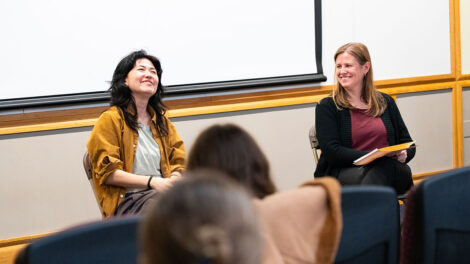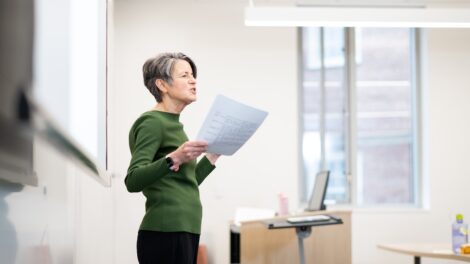Inside the classroom: Systems course helps students visualize the world
By Bryan Hay
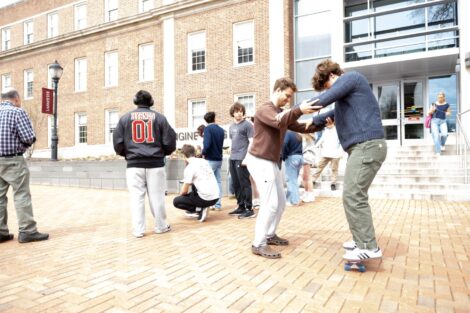
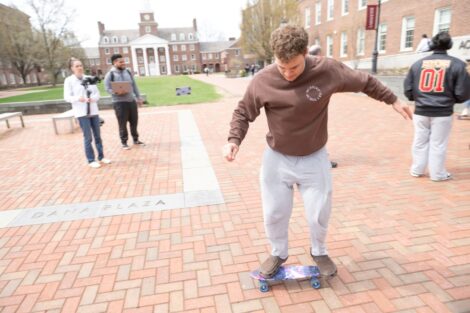
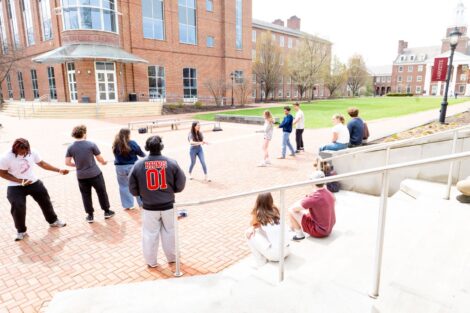
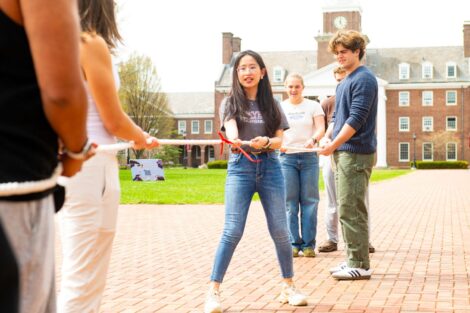
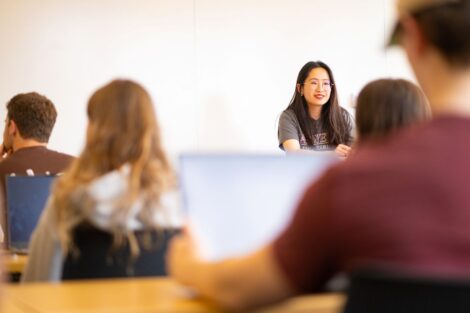
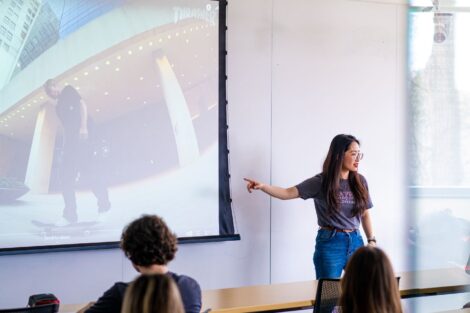
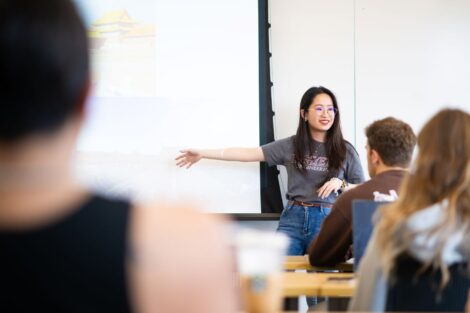
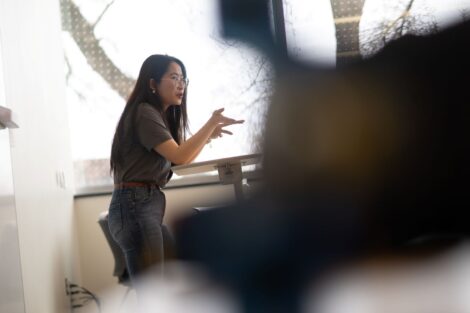
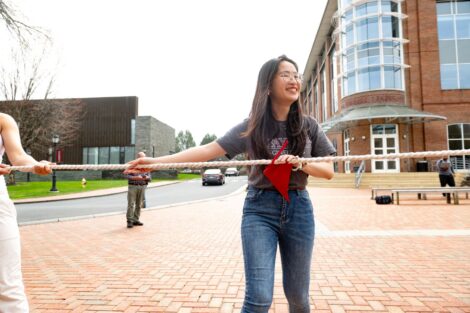
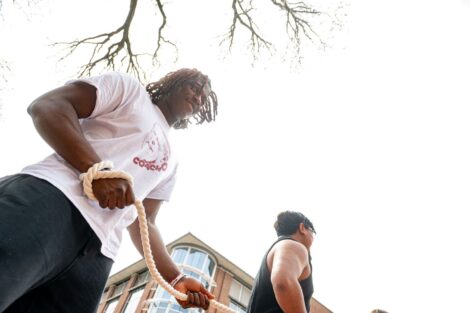
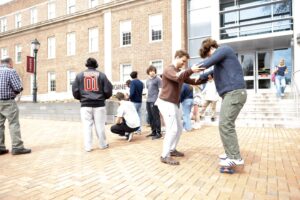

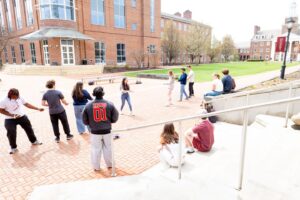
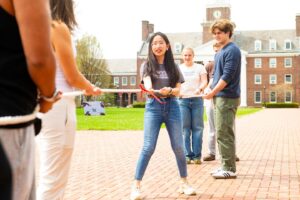

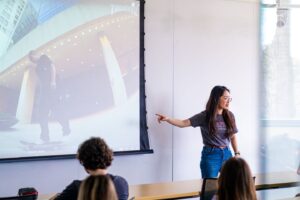
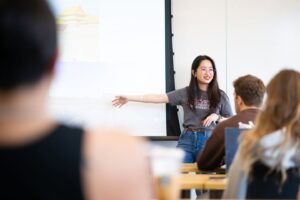


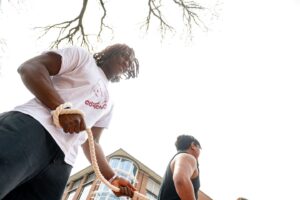
Inside the classroom is a new series offering a glimpse into classes at Lafayette, the talented professors who teach them, and how they impact and define a student’s experience.
Diana Sun opened a session of her spring semester Systems (ES103) class by closely examining the Imperial Palace in Beijing’s Forbidden City, pouring over design details with her students to uncover how its ingenious sloping drainage system has prevented flooding for more than 600 years.
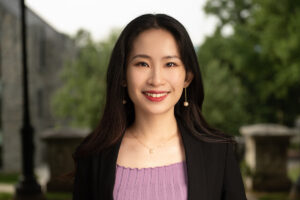
Diana Sun, assistant professor of mechanical engineering, teaches Systems (ES103), a required course for an integrative engineering degree, it’s also popular among juniors and seniors from other nonengineering disciplines
As the classroom discussion moved away from the wonders of the Ming Dynasty, Sun, assistant professor of mechanical engineering, showed a video of skateboarders in action, exploring how friction and momentum come together to keep the skateboard seemingly attached to the feet during stunts.
Later, her students decamped to Anderson Courtyard where they skateboarded themselves to further demonstrate how this recreational activity itself is a system because it combines gravity, balance, and biomechanics to achieve specific goals. A game of tug-of-war also ensued, showing that it too was a system through the use of resilient, consistent force.
Indeed, systems have been part of the human experience since the dawn of civilization, and Sun loves teaching students about the discipline, which leads to solutions to address complex challenges.
“We try to help our students learn, study, understand how to analyze, model, and predict systems that involve mechanics, fluids, and electric phenomena,” Sun describes. “It helps students understand and define what they’re looking at and decide whether something can be ignored, modified, and simplified by making a model.”
Although it’s popular among mechanical engineering students, Systems is a required course for students pursuing a degree in integrative engineering, providing a basic foundation to understand how to make models. Juniors and seniors from other nonengineering disciplines also take the course.
Students learn about Newton’s laws and Kirchhoff’s laws, and how to build a complex math model that involves differential equations. For many of the students in the course, this is their first exposure with modeling, and Sun says they recognize the challenges they face.
But she makes the material accessible and enjoyable.
“It’s hard work, but students enjoy this course a lot,” in large part because systems are omnipresent in our lives, she says.
“I usually start with describing a system as anything that has many things and works together; a pipeline that brings water into a large public swimming pool, for example,” she says. “A system can be very broad, as long as there are things with interconnections, affecting another part and this other part will affect another part. As long as you can find these connections, this is a system. And then when you model these systems, students have the freedom to make decisions and define how their systems will function.”
Out on the courtyard, Alie Kamara ’27, a bioengineering major and defensive lineman on the football team, says the course has led to an appreciation of how systems help people live better lives.
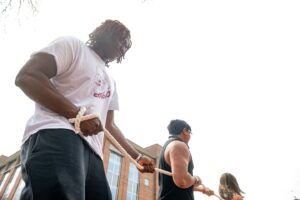
Alie Kamara ’27 says the Systems course has led to an appreciation of how systems help people live better lives. | Photo by Adam Atkinson
“Prof. Sun delivers the material with a smile,” he says. “The course is challenging and complex, but she knows how to teach it and make it all relevant. The hands-on demonstrations help us visualize the concepts.”
“It helps us better observe the world around us,” adds Carson Belaire ’27, who’s majoring in engineering studies and economics and minoring in Spanish. “And Prof. Sun brings such joy in her teaching. She’s so kind and makes it exciting as we gain an appreciation of seeing the world through systems.”
